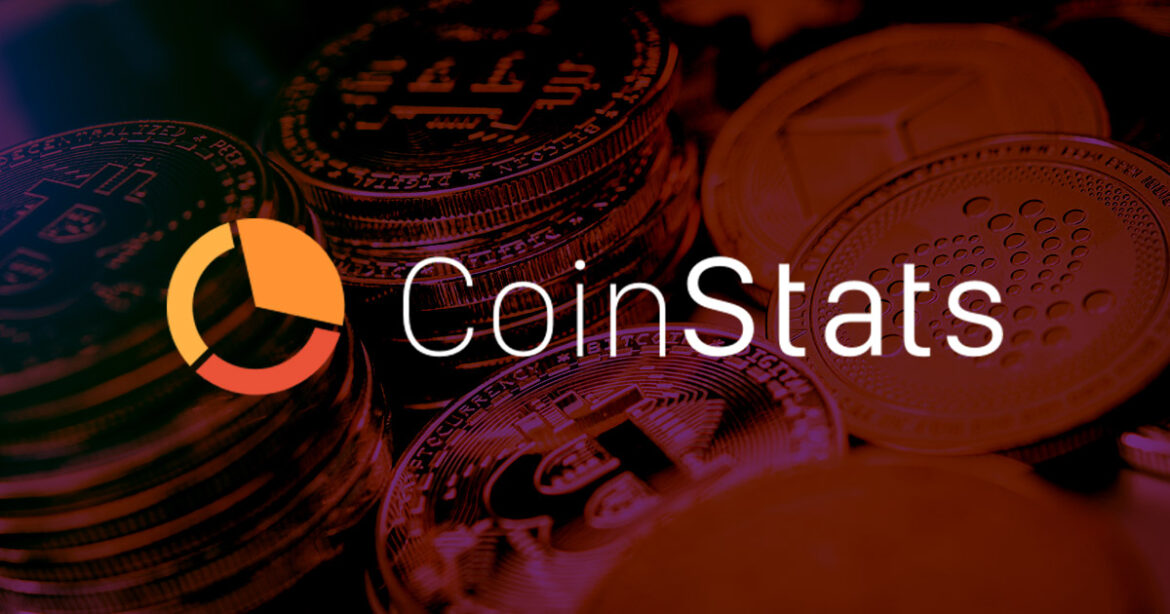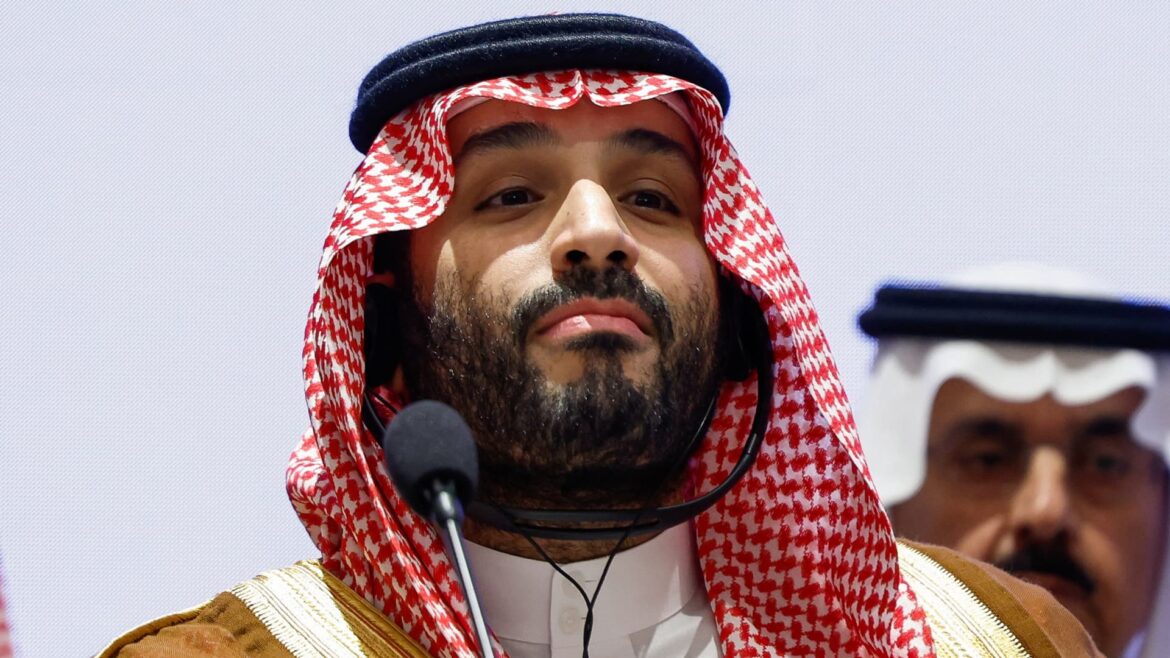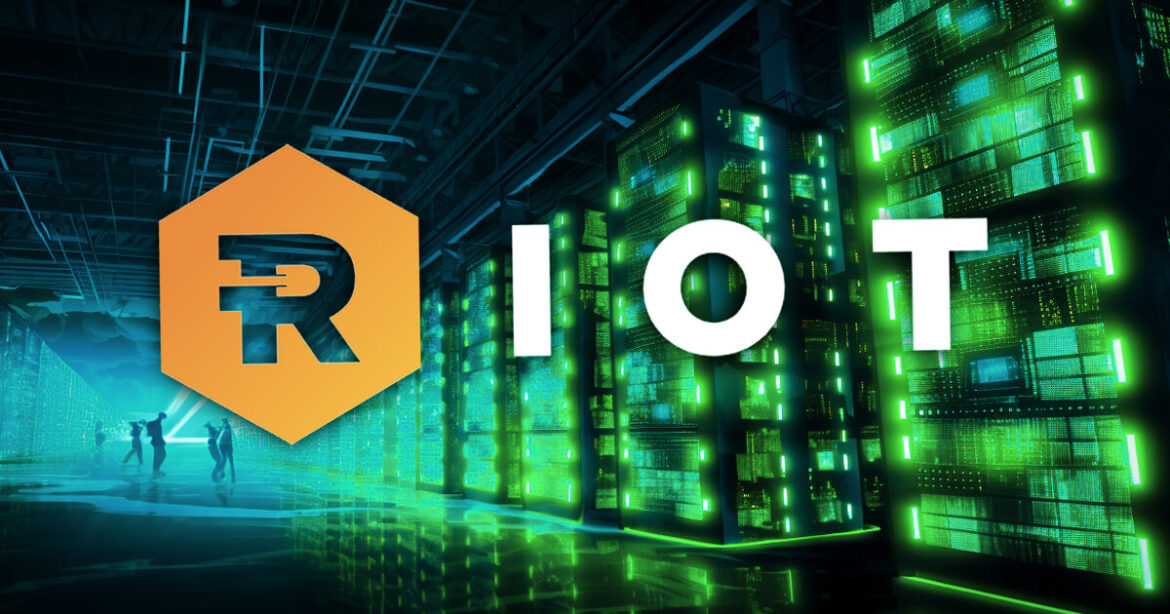 Toncoin, a top 20 cryptocurrency project, will be used by Telegram, the messaging platform, as a payment tool for its new advertisement strategy. Pavel Durov, founder and CEO of Telegram, stated that toncoin would facilitate payments for customers of its advertising platform, announcing that it would share 50% of any profit from these ads with […]
Toncoin, a top 20 cryptocurrency project, will be used by Telegram, the messaging platform, as a payment tool for its new advertisement strategy. Pavel Durov, founder and CEO of Telegram, stated that toncoin would facilitate payments for customers of its advertising platform, announcing that it would share 50% of any profit from these ads with […]
Source link
Strategy
CoinStats introduces AI-driven Exit Strategy feature to maximize crypto profits

Crypto portfolio app CoinStats has unveiled an innovative artificial intelligence (AI)-powered Exit Strategy feature on its platform, empowering traders to optimize their profits effectively, according to a Feb. 2 statement shared with CryptoSlate.
The feature would allow crypto investors to strategically determine the optimal selling price for their cryptocurrency assets within their wallets.
The asset management firm revealed that its premium users can leverage the AI Suggest tool within the Exit Strategy feature to make more nuanced decisions about their crypto portfolios. This tool leverages artificial intelligence to predict the Bull Market Price (BMP) for specific cryptocurrencies, empowering investors with valuable insights for informed decision-making.
“AI-powered analytics are crucial in the volatile and unpredictable field of cryptocurrency, as they provide an additional data-driven approach to securing profits,” the company added.
Exit Strategy tool to be important in upcoming bull market
CoinStats believes the tool would prove useful with the impending crypto bull market catalyzed by the spot Bitcoin exchange-traded funds (ETFs) approval in the U.S.
Several market observers noted that the crypto market would react positively to this development and further predicted that the upcoming BTC halving event would act as another catalyst for the industry.
CoinStats CEO Narek Gevorgyan revealed that he came up with the feature idea because most people hold a surging digital asset “with no idea when they want to sell.” So, the Exit Strategy feature would help these users “set and stick to a selling plan” that would allow them to profit from market rises.
“The biggest mistake I see people making in crypto is not having a plan, they hold a pumping token with no idea when they want to sell. It’s essential to have exact selling prices for your positions, this gave me the idea for a new CoinStats feature,” Gevoryan said.
CoinStats new users will be prompted to integrate the Exit Strategy feature and establish target prices for selling their assets. Once integrated into their profiles, investors can effortlessly review their target prices through the Exit Strategy view, conveniently accessible alongside the portfolio view.
The post CoinStats introduces AI-driven Exit Strategy feature to maximize crypto profits appeared first on CryptoSlate.

The Bank for International Settlements (BIS) has revealed its strategic priorities for 2024, with a particular emphasis on Central Bank Digital Currencies (CBDCs) and tokenization.
The 2024 roadmap points to a continuation of the watchdog’s engagement with digital financial technologies. The BIS has taken a heavily pro-CBDC stance and has published a comprehensive framework for countries looking to create their own localized digital currencies.
Exploring tokenization
One of the most ambitious undertakings in the BIS’s 2024 agenda is Project Promissa, which aims to revolutionize financial instruments by digitizing promissory notes using blockchain technology.
Promissory notes are still paper-based despite their integral role in the financial system. According to the regulator, their digitization could greatly enhance efficiency and transparency in financial transactions.
Project Promissa is a collaborative venture between BIS, the Swiss National Bank, and the World Bank. The proof-of-concept phase for the project is scheduled for completion by early 2025.
Project Aurum
Complementing the tokenization efforts is Project Aurum, a joint initiative with the Hong Kong Monetary Authority (HKMA), which completed its initial pilot testing phase in 2022.
Project Aurum will focus on privacy in retail payments using CBDCs. Following its initial phase in 2022, the project aims to delve deeper into privacy issues related to CBDCs.
Project Aurum’s exploration of CBDC privacy is crucial, considering the growing global interest in digital currencies and the need for secure, private transactions. The project aligns with the broader strategy of the watchdog, highlighting the increasing importance of CBDCs in reshaping the financial sector.
The BIS’s 2024 agenda includes four other projects: Project Leap, Project Symbiosis, Project Hertha, and Project NGFS Data Directory 2.0. These projects cover cybersecurity, green finance, and financial crime. This diversified approach indicates BIS’s broad engagement with various aspects of financial technology.
Historically, BIS has maintained a prudent approach towards digital currencies, with a particular focus on the implications of stablecoins. In late 2023, Agustín Carstens, general manager of BIS, highlighted the importance of central banks in digital currency innovation, with a focus on CBDCs.
Tilray Brands vs. Canopy Growth: Which Cannabis Company Has the Better Long-Term Strategy?
The cannabis industry in Canada is in shambles. Pick a random pot stock and you’re sure to find an investment that is down big over the past few years. Canopy Growth (CGC -1.05%) and Tilray Brands (TLRY -2.79%) are no exception — they’ve fallen more than 50% in just the past 12 months. These businesses are struggling to grow and they are finding it difficult to reach breakeven. Their strategies, however, for fixing their problems vary. Which company is on the better path?
The case for Canopy Growth
Canopy Growth is hunkering down in an effort to streamline its operations and conserve cash as best as it can. The company has been laying off staff this year and it has even sold off its facility in Smiths Falls, Ontario, which served as its headquarters. It has also divested its retail operations in Canada.
Canopy Growth now likes to mention that it’s transitioning to an “asset-light model,” which is a much nicer way of saying that it’s looking to cut whatever it can to bring down expenses. But that’s what it needs to do if it wants to execute on some aggressive long-term plans.
Canopy Growth has been eager to enter the U.S. pot market for years; in 2019 it first revealed plans to acquire multi-state marijuana company Acreage Holdings. And since then, it has announced plans to work with Wana Brands and Jetty Extracts. But it can’t close on those deals with marijuana still not legal in the U.S.
Canopy Growth is effectively in a bit of a holding pattern right now. Legalization doesn’t appear imminent by any stretch, and the Nasdaq has also pushed back on the company’s plans to consolidate and report on the performance of U.S. assets. By trimming its costs and making the business leaner, it can help make its cash last longer, potentially reducing the need to raise capital in the near future.
In the three-month period ended June 30, Canopy Growth burned through 148.7 million Canadian dollars ($108 million) over the course of its day-to-day operating activities. That’s worse than the CA$140.5 million cash burn it reported a year ago. But with the company no longer planning to fund its cash-burning nutritional business, BioSteel, that should slow the rate of cash burn down. As of the end of June, Canopy Growth had cash and cash equivalents totaling CA$533 million, which could last more than a year if its cash burn slows down.
Canopy Growth’s plans to get leaner can help the business at a time when being large in the highly competitive Canadian cannabis industry isn’t necessarily a good thing. And improving its financials can put it in a good position to pursue growth opportunities in the U.S., if and when they open up.
The case for Tilray Brands
While Canopy Growth has been getting leaner, Tilray Brands has been in acquisition mode and diversifying its operations. One area that has been of particular focus for the business is alcohol. In August, the company announced it was going to acquire eight beverage brands from Anheuser-Busch InBev in a bid to expand its presence in the U.S. and its alcohol business. As a result of the deal, Tilray Brands projects it will hold 5% of the market for craft beer in the U.S.
Diversifying into alcohol is a good move for Tilray because it can help improve its bottom line. Here’s a comparison of the company’s gross margin by segment in its most recent quarter, which ended in August:
| Segment | Revenue | Gross Margin |
|---|---|---|
| Cannabis | $70.3 million | 28% |
| Beverage | $24.2 million | 53% |
| Distribution | $69.2 million | 11% |
| Wellness | $13.3 million | 29% |
Data source: Company filings.
Beverages aren’t a big part of the company’s operations right now, but expanding more into that area could be a way for Tilray to improve its financials. Last quarter, the company’s net loss totaled $55.9 million, less than a loss of $65.8 million in the year-ago period. As Tilray’s beverage business grows, its bottom line should improve as well.
Both stocks are risky but Tilray looks better overall
Investing in Canadian marijuana stocks is extremely risky, but if you’re looking specifically at these two pot stocks, Tilray is in a better position right now. The business is at least finding growth opportunities and ways for its operations and financials to improve. Canopy Growth’s obsession with the U.S. market and simply waiting on it to open up is far too risky — legalization could be years away from happening, assuming it happens at all.
Diversifying outside of cannabis is a sound strategy that could help Tilray’s operations become stronger and make the stock a more tenable investment to hang on to (without having to rely on U.S. marijuana legalization), which is why it’s far and away the better investment option today.
Greece establishes AI advisory committee to create national strategy

Greek Prime Minister Kryiakos Mitsotakis announced the establishment of an advisory committee to create a national strategy for artificial intelligence (AI) in Greece on Oct. 19.
The Greek government said the “exponential pace” of AI development has created the necessity for an advisory committee under the country’s prime minister. The object of the committee is to prepare Greece for the developments and applications of the technology.
Mitsotakis commented on the establishment of the commission, saying the reception of the technology must be organized before it becomes a daily reality. “This is not about the future but the present,” he said.
The commission will be led by Constantinos Daskalakis, a professor of computer science at MIT, and has professionals in related fields such as technology, ethics, law and science. It also includes Greek researchers and scientists, a part of the diaspora living outside of Greece.
Daskalakis commented on the initiative, saying:
“We will also work in a coordinated manner so that Greece can be a member of the international initiatives for Artificial Intelligence that are being developed within the framework of the International Organization of Artificial Intelligence.”
Related: How Bitcoin ATMs in Greece fare during a record-breaking tourist season
A central component of the advisory committee will also be formulating policy recommendations and creating guidelines for a long-term national strategy.
According to the announcement, the AI strategy will include considering its impact on the economy and society, improving productivity, increasing innovation and strengthening local infrastructure, among other things.
Greece is among the 27 member states of the European Union that would be subject to the EU’s forthcoming EU AI Act.
Earlier in October, EU officials announced that they are considering even more restrictive regulations for large AI models such as OpenAI’s ChatGPT and Meta’s Llama 2.
Magazine: ‘AI has killed the industry’: EasyTranslate boss on adapting to change
The big-spending Saudi Pro League is aiming to build its global broadcasting presence and become one of the top 10 soccer leagues in the world, its chief operating officer, Carlo Nohra, told CNBC on Thursday.
The league dominated the sports headlines over the summer as Saudi clubs cumulatively spent more than $1 billion in transfer fees and attracted some of the biggest names from Europe’s top leagues with mammoth contract offers.
Brazilian superstar Neymar and Senegalese forward Sadio Mane followed the previous arrivals of former Ballon D’Or winners Karim Benzema and Cristiano Ronaldo, along with a host of other stars from the English Premier League, Spain’s La Liga, Germany’s Bundesliga, Italy’s Serie A and France’s Ligue 1.
Speaking to CNBC at the APOS conference in Bali, Indonesia, on Thursday, Nohra said that Saudi Arabia’s strategy is “extremely long term,” but that the acquisition of players was the first step.
“While that helps us grow on the pitch, the idea is to grow off the pitch and to commercialize as well, so the strategy takes in every element that we need to focus on to get the Saudi Pro League to where it aspires to be among the top 10 leagues in the world,” he said.

The kingdom’s massive investment in sport is part of a broader effort to diversify its economy away from oil by investing in commercial infrastructure to become a tourism, leisure and entertainment powerhouse.
It is also being used to bolster the country’s global reputation, with critics arguing that the ultimate aim of Saudi Arabia’s investment in soccer, golf, boxing, motor racing, and many other sport and entertainment ventures is to distract from its dismal human rights record.
Crown Prince Mohammed bin Salman, in a recent interview with Fox News, embraced accusations of “sportswashing” and said he did not care about the criticism, so long as the massive sporting investments ultimately yielded a positive contribution to Saudi GDP growth.
Nohra explained that the objectives handed down to the Saudi Pro League’s bosses were to firstly improve on-pitch performance through the acquisition of world-class players, to fill the country’s stadia and ultimately to drive the commercialization of the vastly improved overall product.

“We had a long, hard look at ourselves, we’ve discovered that we need to improve the governance of the league, we need to improve the product itself and the commercialization of that product, better understanding of our fans,” he said.
“The player acquisition presented some issues that needed to be addressed, the clubs’ capabilities needed to improve so we’ve looked at that as well, and equally how we’re organized as a league in order to compete at the global level.”
Along with the domestic revenues the government is hoping to generate through in-person match attendance, capitalizing on Saudi Arabia’s young population’s love of the sport, Nohra also said the Saudi Pro League was looking to expand its broadcast presence around the world.
“Since the introduction of Cristiano Ronaldo into the league in January, we’ve seen global distribution expand to unprecedented levels for Saudi soccer, and through the acquisitions this summer, we’ve had renewals across the board with now the needle moving on the commercialization of those rights across the world,” he said.
“So we’re delighted with where we are at the moment but we still need to continue to deliver for fans across the world what they now wish to have from Saudi football.”
Nigeria invites global experts to collaborate on national AI strategy

Nigeria is extending an invitation to scientists of Nigerian heritage, as well as globally renowned experts who have worked within the Nigerian market, to collaborate in the formulation of its National Artificial Intelligence (AI) Strategy.
According to Bosun Tijani, the Minister of Communications, Innovation and Digital Economy, who made the announcement on X (formerly Twitter), the National Information Technology Development Agency (NITDA) has initiated the development of a National AI Strategy.
The action will impact the way the government formulates new technological solutions for its critical national challenges. As a result, the government is broadening its co-creation strategy by assembling a selection of leading AI researchers with Nigerian heritage from around the world.
The Nigerian government recognizes that AI has developed into a versatile technology, reshaping production and services and holds immense potential for influencing societal progress and economic expansion.
We’re curating a list of the top researchers of Nigerian descent from all over the world to join us in co-creating a National AI Strategy. The strategy will help shape our approach to building innovative tech solutions to our most pressing national problems…1/2 pic.twitter.com/6JpPPps3oy
— Dr. ‘Bosun Tijani (@bosuntijani) August 28, 2023
According to a PricewaterhouseCoopers study, artificial Intelligence could contribute $15.7 trillion to the global economy by 2030, with approximately $3 trillion attributed to enhanced productivity and $9.1 trillion arising from novel goods and services.
According to a white paper titled “Co-creating a National Artificial Intelligence Strategy for Nigeria,” which is referenced in the minister’s post, a sophisticated method was used to pinpoint accomplished AI researchers with Nigerian roots, using global AI publication data and advanced machine learning models.
Similar to the “h-index,” a research index was created to locate influential AI researchers of Nigerian heritage. As the preliminary research phase concludes, the Nigerian government seeks public involvement, acknowledging the potential for errors and aiming to tap into collective knowledge and insights.
Related: Nigerian crypto exchange’s token launch draws scrutiny
Reports from local media indicate that Kashifu Inuwa, the director-general of NITDA, has revealed intentions to establish communities of AI developers nationwide to influence the country’s technological future. He mentioned that the initiative will commence in three states in 2023, followed by strategic planning for its extension to additional states and, eventually all local government areas.
Collect this article as an NFT to preserve this moment in history and show your support for independent journalism in the crypto space.
Magazine: AI Eye: Get better results being nice to ChatGPT, AI fake child porn debate, Amazon’s AI reviews
Riot leverages Texas power strategy to fund operations as BTC balance increases

Riot Platforms, Inc. recently reported its June 2023 Bitcoin mining performance, revealing that it produced 460 Bitcoin while executing an effective power strategy.
The mining firm produced 40% fewer Bitcoin in June, mining just 460 BTC compared to 757 BTC in May.
| Metric | June 2023 | May 2023 | June 2022 | Month/Month | Year/Year |
|---|---|---|---|---|---|
| Bitcoin Produced | 460 | 676 | 421 | -32% | 9% |
| Average Bitcoin Produced per Day | 15.3 | 21.8 | 14.0 | -30% | 9% |
| Bitcoin Held | 7,250 | 7,190 | 6,654 | 1% | 9% |
| Bitcoin Sold | 400 | 600 | 300 | -33% | 33% |
| Bitcoin Sales – Net Proceeds | $10.6 million | $16.5 million | $6.2 million | -36% | 71% |
| Average Net Price per Bitcoin Sold | $26,456 | $27,568 | $20,627 | -4% | 28% |
| Deployed Hash Rate | 10.7 EH/s | 10.5 EH/s | 4.4 EH/s | 2% | 143% |
| Deployed Miners | 95,904 | 94,176 | 42,455 | 2% | 126% |
| Power Sales | $8.4 million | $0.5 million | $1.9 million | 1,452% | 338% |
| Demand Response Revenue | $1.6 million | $2.3 million | $0.7 million | -29% | 137% |
Source: Riot
Despite the drop in sales, Riot was able to leverage its power strategy to generate substantial revenue equivalent to $10 million in revenue. As a result, the combined power sales and demand response revenue equated to an equivalent of a “361 BTC” increase based on the average price of Bitcoin during the month.
Jason Les, CEO of Riot, commented,
“June was a momentous month for Riot, as the results from our mining operations, power strategy and growth plans have all come together.
We announced an initial order of 33,280 MicroBT miners for our Corsicana Facility, which is expected to add 7.6 EH/s to our self-mining fleet and also provides optionality for future orders at the same terms.”
The additional MicroBT miners would increase Riot’s hash rate by 71%, given the current reported figure of 10.7 EH/s.
Bitcoin miners are selling BTC.
The news comes as other U.S. miners looked to capitalize on BTC’s recent price surge to secure profits. In June, BTC mostly traded above $25,000, peaking at $30,750.
According to Glassnode data analyzed by CryptoSlate, Bitcoin miners sold a notable amount of their mined Bitcoin in June to fund their operations. Data shows that Bitcoin miners’ exchange flow peaked at 4,710 BTC on June 20, marking the highest rate in the past five years.
| MINER | BITCOIN PRODUCED | BITCOIN SOLD | PERCENTAGE SOLD | BTC HOLDINGS | TOTAL HOLDINGS SOLD |
|---|---|---|---|---|---|
| Riot | 460 BTC | 400 BTC | 87% | 7,250 BTC | 5.52% |
| Marathon Digital | 979 BTC | 700 BTC | 71.5% | 12,538 BTC | 5.58% |
| Hut 8 | 70 BTC | 217 BTC | 310%* | 9,136 BTC | 2.38% |
| Cleanspark | 491 BTC | 413 BTC | 84% | 529 BTC | 78.07% |
June BTC Miner Activity
*(Based on June Production)
Comparatively, Riot sold fewer Bitcoins monthly as the company reported a sale of 400 Bitcoins in June 2023, a decrease of 33% from May 2023.
Riot’s power strategy
However, Riot’s unique power strategy allowed the company to maintain a “competitive edge” and contribute meaningfully to the broader energy grid during Texas’s June heatwave without relying solely on Bitcoin sales for revenue. Les explained,
“As temperatures in Texas reached near record levels during the month and power demand was high, we made dynamic decisions on our power usage based on market signals.
Through our participation in various market programs within ERCOT, the Company generated $8.4 million in power sales and $1.6 million in demand response revenue.”
According to Riot, the power strategy involves participation in ERCOT’s ancillary services and the Four Coincident Peak (4CP) program. The company effectively uses these services to balance electricity supply and demand, even during peak periods.
Riot then sells access to electrical load to ERCOT and receives compensation regardless of whether ERCOT requires a power down. Through the 4CP program, Riot voluntarily reduces power usage during peak periods and, in return, receives credits for future transmission costs.
The flexibility of its long-term Power Purchase Agreement allows Riot to sell power back to the market when it’s more profitable than mining Bitcoin.
Unveiled: AMD’s AI Strategy — Will AMD Snatch the Crown From Nvidia?

1 Stock-Split Stock Set to Join Apple, Microsoft, Amazon, and Alphabet in the $1 Trillion Club

Cathie Wood Says Robotaxi Revenue is Headed Toward $4 Trillion — 2 Growth Stocks to Buy Now

2 Stocks I’m Never Selling

Where Will SoFi Stock Be in 1 Year?









